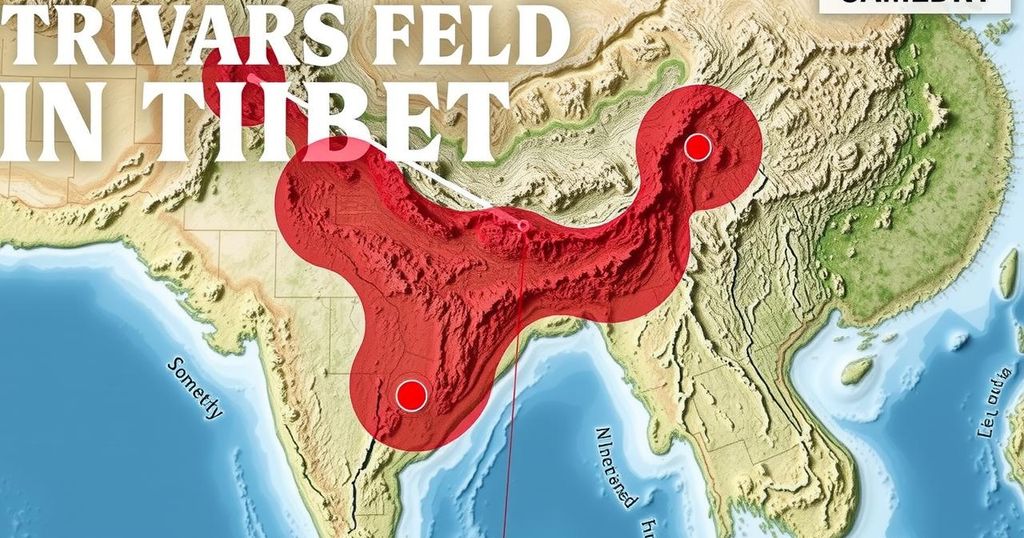Devastating Earthquake in Tibet Leaves Death Toll at 126 and Hundreds Injured
A powerful earthquake struck Tibet on January 7, resulting in at least 126 deaths and injuring 188 individuals. The 6.8-magnitude quake severely damaged infrastructure, leaving many people trapped under rubble and thousands homeless. Rescue operations are hindered by harsh winter conditions and numerous aftershocks. A total of over 400 individuals have been rescued, but uncertainty remains regarding the number still missing. The Chinese government has deployed thousands of rescue workers and military personnel to assist in recovery efforts.
On January 7, a devastating earthquake measured at 6.8 on the Richter scale struck the Tingri district of Tibet, resulting in a tragic loss of life and widespread destruction. At least 126 individuals have been confirmed dead, while 188 others have sustained injuries. Eyewitnesses reported that the earthquake caused severe damage, destroying over 3,600 homes in Shigatse prefecture. Rescue operations are ongoing, yet the situation is complicated by harsh winter conditions, including temperatures that have plummeted to -18°C, and the occurrence of over 500 aftershocks. Rescue teams have successfully extricated more than 400 survivors from the rubble; however, there remains a possibility that numerous individuals remain trapped beneath the debris. The Chinese government has mobilized more than 1,800 rescue personnel along with 1,600 military troops to aid in the extensive recovery efforts.
The earthquake’s epicenter was located approximately 80 kilometers north of the iconic Mount Everest, at the foothills of the Himalayas. Tremors from the earthquake were felt across several neighboring countries, including Nepal, Bhutan, and India. According to reports from state-controlled Chinese media, the current death toll is at 126, alongside hundreds of injuries. As communities begin to assess the damage, authorities are urgently seeking to provide temporary shelters and heating for those who have been left homeless due to the disaster.
Historically, Tibet is a region of significant cultural and political sensitivity. Although Tibet declared independence in 1912, it was reabsorbed by China in 1951, leading to ongoing tensions between the two. While the region was granted an autonomous status in 1965, accusations of religious repression and cultural destruction by the Chinese government are prevalent among Tibetans in exile. Conversely, Beijing claims to improve living standards and support local culture in Tibet. The aftermath of this earthquake highlights both the urgent humanitarian crisis and the complex political landscape surrounding the region.
The seismic incident in Tibet on January 7 is a stark reminder of the region’s vulnerability to natural disasters, particularly in the context of its rugged terrain and climatic challenges. Historically, Tibet has experienced various seismic events due to its tectonically active environment, largely owing to its location within the Himalayan Mountain range. The current earthquake underscores the precarious nature of life in Tibet, where geographical factors and political issues interconnect. The Chinese government’s response to the seismic disaster will be scrutinized, not only in terms of immediate humanitarian aid but also in the broader context of Tibetan autonomy and cultural preservation.
In conclusion, the earthquake in Tibet marks a tragic event with significant loss of life and extensive damage to infrastructure. With over 126 confirmed fatalities and harsh winter conditions hampering rescue efforts, the situation remains critical. It is essential for international observers to remain attentive to both the humanitarian needs arising from this disaster and the overarching political complexities inherent in the region. The actions taken by the Chinese authorities in response to this crisis may have lasting implications for the future of Tibet and its people.
Original Source: babel.ua




Post Comment